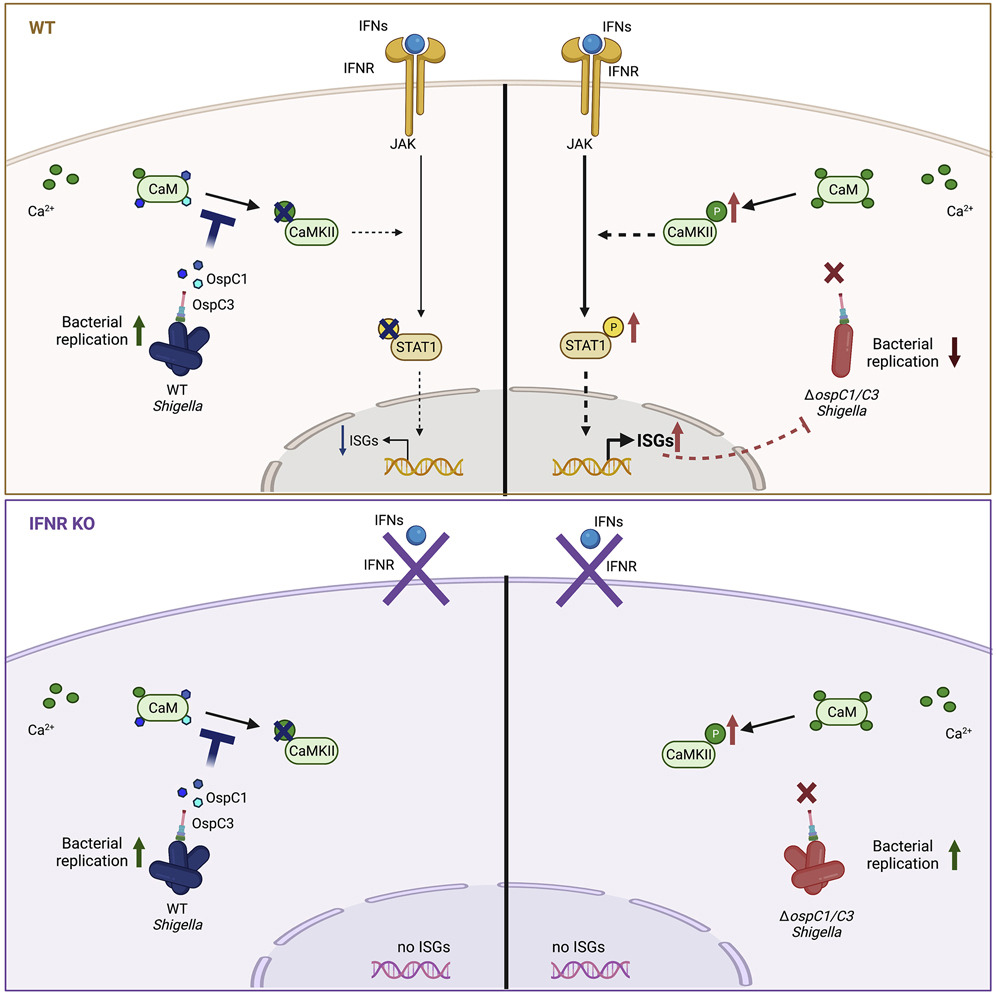
Cell, May 2022
Alphonse Noémie, Wanford Joseph J, Voak Andrew A, Gay Jack, Venkhaya Shayla, Burroughs Owen, Mathew Sanjana, Lee Truelian, Evans Sasha L, Zhao Weiting, Frowde Kyle, Alrehaili Abrar, Dickenson Ruth E, Munk Mads, Panina Svetlana, Mahmood Ishraque F, Llorian Miriam, Stanifer Megan L, Boulant Steeve, Berchtold Martin W, Bergeron Julien R C, Wack Andreas, Lesser Cammie F, Odendall Charlotte,
A family of conserved bacterial virulence factors dampens interferon responses by blocking calcium signaling.
Interferons (IFNs) induce an antimicrobial state, protecting tissues from infection. Many viruses inhibit IFN signaling, but whether bacterial pathogens evade IFN responses remains unclear. Here, we demonstrate that the Shigella OspC family of type-III-secreted effectors blocks IFN signaling independently of cell death inhibitory activity. Rather, IFN inhibition was mediated by the binding of OspC1 and OspC3 to the Ca sensor calmodulin (CaM), blocking CaM kinase II and downstream JAK/STAT signaling. The growth of Shigella lacking OspC1 and OspC3 was attenuated in epithelial cells and in a murine model of infection. This phenotype was rescued in both models by the depletion of IFN receptors. OspC homologs conserved in additional pathogens not only bound CaM but also inhibited IFN, suggesting a widespread virulence strategy. These findings reveal a conserved but previously undescribed molecular mechanism of IFN inhibition and demonstrate the critical role of Ca and IFN targeting in bacterial pathogenesis.
Visit Journal